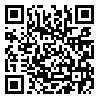Volume 16, Issue 86 (2019)
FSCT 2019, 16(86): 109-118 |
Back to browse issues page
Download citation:
BibTeX | RIS | EndNote | Medlars | ProCite | Reference Manager | RefWorks
Send citation to:



BibTeX | RIS | EndNote | Medlars | ProCite | Reference Manager | RefWorks
Send citation to:
soofi M, Alizadeh A, Mousavi Kalajahi S E. Optimization of low fat prebiotic yogurt processing containing inulin at different temperatures and shear stresses. FSCT 2019; 16 (86) :109-118
URL: http://fsct.modares.ac.ir/article-7-20758-en.html
URL: http://fsct.modares.ac.ir/article-7-20758-en.html
1- Tabriz Branch, Islamic Azad University
2- Tabriz Branch, Islamic Azad University , a.alizadeh@iaut.ac.ir
2- Tabriz Branch, Islamic Azad University , a.alizadeh@iaut.ac.ir
Abstract: (3659 Views)
Recognizing the relations between different variables of fat replacing, modeling could contribute to an optimum control of the process and accordingly improve the quality of the final low fat product such as yogurt. In the present study, the Response Surface Methodology (RSM) and Central Composite Design (CCD) has been applied to investigate the effects of different concentrations of inulin (0, 3 and 6%) as a fat replacer, heat treatment (70, 82.5 and 95°c) and various shear stresses using a stirrer (3000, 6000 and 9000 RPM) on gelling properties of yogurt and also different quality attributes of a low fat yogurt. The equations obtained from the study showed that undependent variables had significant effects on the measured attributes (p<0.05). The most effective factor was inulin concentration that improved the low fat yogurt texture, although higher concentrations had negative effect on sensory properties and color. On the other hand, heat treatment had significant effect on gelling ability of yogurt. In sum, sample with 3% inulin, processed at 82.5°C and stirred at 6000 RPM was selected as optimum condition for prebiotic yogurt processing by inulin.
Article Type: Original Research |
Subject:
Supplemented foods (probiotics, parabiotics ...)
Received: 2018/05/12 | Accepted: 2018/12/23 | Published: 2019/04/15
Received: 2018/05/12 | Accepted: 2018/12/23 | Published: 2019/04/15
Send email to the article author
| Rights and permissions | |
 |
This work is licensed under a Creative Commons Attribution-NonCommercial 4.0 International License. |






